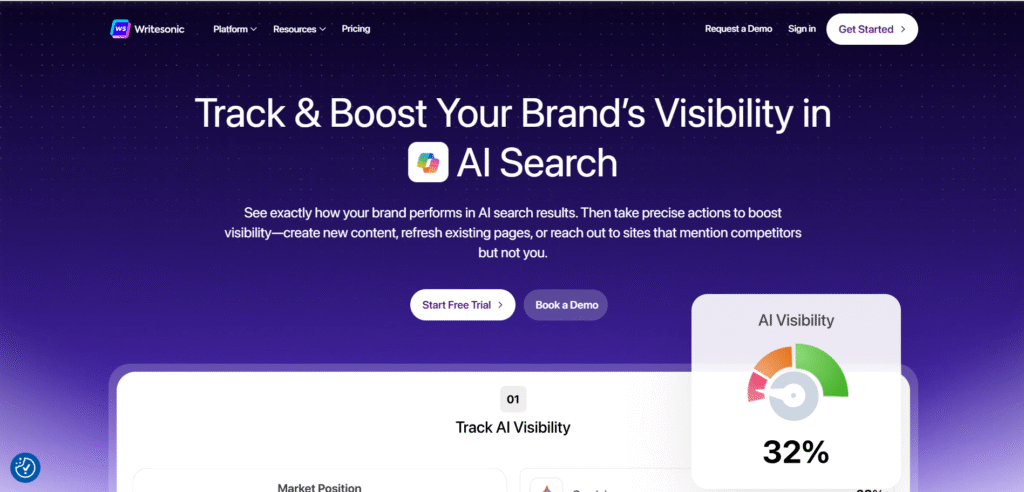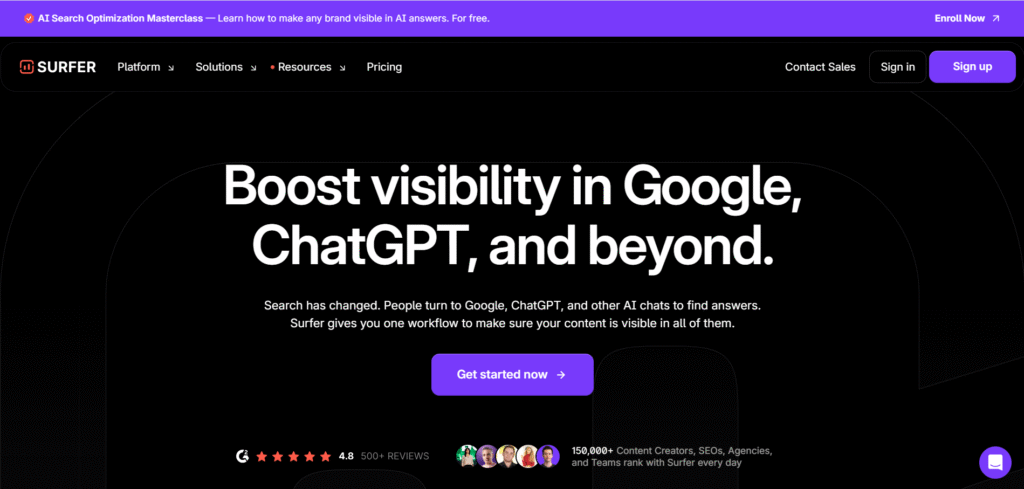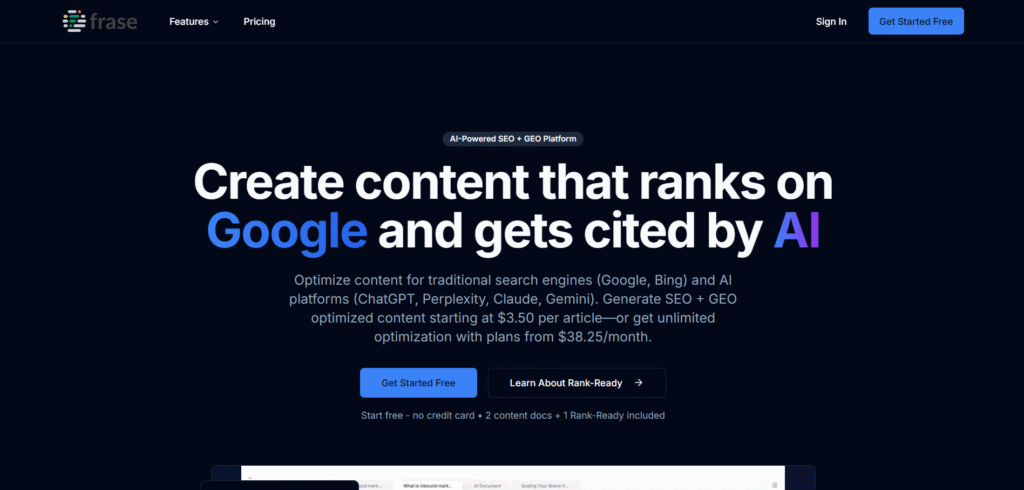Introduction
The world of content creation is rapidly evolving, with artificial intelligence (AI) playing a significant role in transforming how blogs are written. AI-powered blog writing tools have made it easier than ever to generate high-quality content quickly and efficiently. This comprehensive guide explores the top 10 AI blog writing tools that are revolutionizing the way we create content, detailing their features, functionality, and benefits.
The Rise of AI in Blog Writing
AI in blog writing leverages advanced algorithms and machine learning to assist writers in generating content. These tools can help with everything from brainstorming ideas to writing entire articles. By analyzing vast amounts of data and learning from patterns, AI writing tools can produce content that is not only coherent but also optimized for SEO and reader engagement.
Top 10 Blog Writing AI Tools
🥇 1. Jasper AI
Website: https://www.jasper.ai

Description:
Jasper AI (formerly Jarvis) is one of the most advanced AI content creation tools built for marketing teams and businesses. It helps you create long-form blog posts, social media captions, ad copies, and email campaigns with brand-consistent tone and SEO-optimized content.
Highlights:
- “Boss Mode” for long-form blog automation
- Templates for over 50 content types
- Built-in plagiarism checker and SEO Surfer integration
- Ideal for teams managing multiple brands
🥈 2. Copy.ai
Website: https://www.copy.ai

Description:
Copy.ai is a versatile AI writer focused on short- and long-form content. It uses GPT-based models to generate blog intros, outlines, and full articles instantly. The interface is intuitive and ideal for non-technical users.
Highlights:
- AI Blog Wizard for guided blog creation
- Tools for product descriptions, captions & ad copies
- Custom brand voice builder
- Collaboration and workflow management tools
🥉 3. Writesonic
Website: https://www.writesonic.com

Description:
Writesonic is a powerful AI writing assistant known for its SEO-friendly blog generation. It includes tools for complete blog workflows — from idea to outline to final post. It also powers Chatsonic, a conversational AI for real-time content help.
Highlights:
- AI Article Writer 6.0 for long-form blogs
- SEO and readability optimization
- Integration with SurferSEO and WordPress
- Chatsonic for chat-based writing
4. Rytr
Website: https://www.rytr.me

Description:
Rytr is a cost-effective, easy-to-use AI writing platform ideal for small creators or freelancers. It supports 30+ languages and can produce blog ideas, introductions, paragraphs, and entire posts with a few clicks.
Highlights:
- 40+ use-case templates
- Built-in plagiarism checker
- SEO and readability scoring
- Budget-friendly pricing plans
5. Surfer SEO
Website: https://www.surferseo.com

Description:
Surfer SEO isn’t just for keyword research — it now includes AI-assisted content generation. It helps you write blog posts optimized for search intent using real-time SERP data, NLP keywords, and competitor analysis.
Highlights:
- Content Score for SEO benchmarking
- SERP-driven topic and keyword clustering
- AI writing assistant for blog outlines
- Integration with Google Docs & Jasper
6. Scalenut
Website: https://www.scalenut.com

Description:
Scalenut is a full-stack AI SEO content platform designed for research-driven long-form writing. It generates outlines based on top-ranking pages, helping you write detailed and SEO-optimized blogs.
Highlights:
- Cruise Mode for auto-generated blogs
- Competitor SERP analysis
- Keyword clustering and SEO audits
- Ideal for agencies & SEO professionals
7. Writesonic’s Chatsonic
Website: https://writesonic.com/chat

Description:
Chatsonic is like ChatGPT with real-time internet access. It’s perfect for writing blogs with up-to-date stats, facts, or trends. It understands brand tone and can produce entire posts with citations.
Highlights:
- Real-time Google data access
- Voice command and persona customization
- Integrates with Google Docs and WordPress
- Great for fact-based, updated blogs
8. Frase.io
Website: https://www.frase.io

Description:
Frase.io combines AI writing with SEO content optimization. It helps you research, plan, and write content that ranks by analyzing SERP competitors. The content briefs and AI-generated paragraphs make it a favorite among SEO writers.
Highlights:
- AI topic clustering & keyword optimization
- SERP-based content briefs
- Outline generator and FAQs builder
- Content scoring system for SEO quality
9. Hypotenuse AI
Website: https://www.hypotenuse.ai

Description:
Hypotenuse AI specializes in brand-consistent long-form content. It can generate entire blog articles, product descriptions, or eCommerce content that fits a defined tone. The tool ensures consistent style across multiple projects.
Highlights:
- AI brand tone training
- Bulk content generation for blogs & catalogs
- SEO meta description automation
- Multi-language support
10. INK AI Writer
Website: https://inkforall.com

Description:
INK AI Writer is an all-in-one AI-powered SEO platform combining content creation, optimization, and plagiarism detection. It focuses on ranking improvements and audience engagement metrics.
Highlights:
- AI writing + SEO scoring system
- Built-in plagiarism checker
- Readability and tone analyzer
- Chrome and WordPress integrations
Comparison Table of Top AI Blog Writing Tools
| Tool | Core Focus | Best For | Key Features | Website |
|---|---|---|---|---|
| Jasper AI | Marketing-grade AI writing | Teams & agencies | Boss Mode, SEO Surfer, Templates | jasper.ai |
| Copy.ai | Fast content generation | Bloggers & marketers | Blog Wizard, Brand Voice, Templates | copy.ai |
| Writesonic | SEO-friendly long-form blogs | Writers & SEO experts | Article Writer 6.0, Chatsonic | writesonic.com |
| Rytr | Affordable writing assistant | Freelancers & startups | 40+ Templates, Plagiarism Check | rytr.me |
| Surfer SEO | SEO writing & optimization | SEO teams | SERP Analysis, NLP Keywords | surferseo.com |
| Scalenut | AI + SEO content research | Agencies & content strategists | Cruise Mode, SERP Insights | scalenut.com |
| Chatsonic | Real-time AI blogging | Journalists & marketers | Live Google Data, Persona Mode | writesonic.com/chat |
| Frase.io | Research-driven content | SEO writers | Topic Clustering, Content Score | frase.io |
| Hypotenuse AI | Brand-consistent blogs | eCommerce & agencies | Brand Tone, Bulk Content | hypotenuse.ai |
| INK AI Writer | SEO + readability focus | Bloggers & SEO teams | SEO Score, Tone Analysis | inkforall.com |
Choosing the Right AI Blog Writing Tool for You
Choosing the right AI blog writing tool depends on your specific needs and preferences. If you need versatile, high-quality content generation, OpenAI’s GPT-4 is a great choice. Jasper is ideal for users looking for a user-friendly interface and SEO integration. Writesonic and Copy.ai are excellent for fast content creation in multiple languages. For automated writing with SEO optimization, consider ContentBot and Article Forge. Evaluate the features, pros, and cons of each tool to find the best fit for your blog writing needs.
FAQs
What are AI blog writing tools?
AI blog writing tools use artificial intelligence to assist in creating, editing, and optimizing blog content. These tools can generate text, suggest improvements, and ensure content is SEO-friendly.
Are AI blog writing tools free?
Many AI blog writing tools offer free versions with basic features. However, for access to advanced tools and functionalities, a subscription or one-time purchase is often required.
How do AI blog writing tools work?
AI blog writing tools work by analyzing input data and using machine learning algorithms to generate content. They can mimic human writing styles, provide text suggestions, and optimize content for SEO.
Which AI blog writing tool is best for beginners?
For beginners, Jasper and Rytr are great choices due to their user-friendly interfaces and comprehensive features that do not require advanced technical skills.
Can AI blog writing tools improve SEO?
Yes, many AI blog writing tools are designed to improve SEO by optimizing keywords, meta descriptions, and overall content structure, helping your blog rank higher on search engines.
Do AI blog writing tools generate unique content?
Yes, AI blog writing tools are designed to generate unique content. They use advanced algorithms to create text that is original and free from plagiarism.
Conclusion
AI blog writing tools have revolutionized the way content is created, making it easier, faster, and more efficient. Whether you are a professional blogger, a content marketer, or a casual writer, these tools can significantly enhance your content creation process. Explore the features, benefits, and potential of each tool to find the perfect match for your blogging needs.



